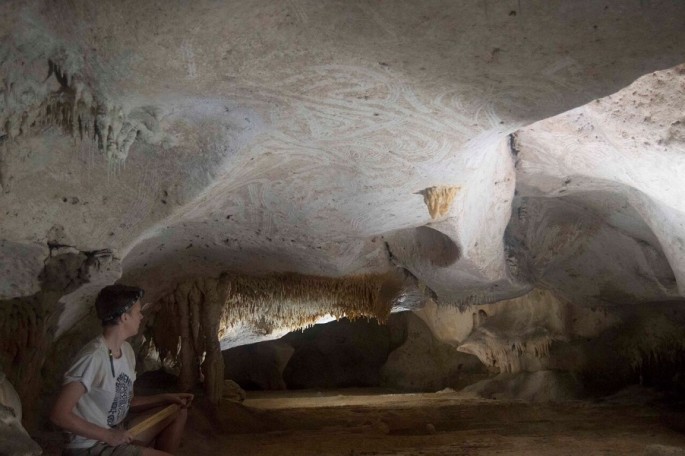The discovery of ancient cave art now serves as evidence about how European explorers and settlers spread their religious beliefs among Native Americans, some 700 years ago.
Cave art discovered inside a cave on a remote island in the Caribbean suggests how the first generation of European settlers crossed the Atlantic ocean and began to colonize the New World with the help of religious propaganda. Scientists believe that explorers engaged in religious talks with the native people of the Americas.
Past expeditions revealed compelling evidence about spiritual iconography painted on the caves of Mona, which is also the third biggest island in Puerto Rico, as the country has been a crucial stop for European sailing and trade routes.
In this new study however, researchers from Puerto Rico and the United States have determined a series of signatures and inscriptions inside the cave, believed to be European in origin, which includes Christian symbols and Latin including Spanish religious phrases.
According to archaeologist, Alice Samson, from the University of Leicester, these types of interdisciplinary approaches provide a new understanding about how colonizers use other methods as opposed to mere oppression and domination and in extreme cases, indigenous extinction. This also provides a historical counterpoint about how religious engagements began that transformed cultural identities in the Americas.
Scientists also say that these intercultural exchanges can provide new insight about how both cultures, European and Native Americans, have shaped their identities as a people during the 15th to 16th centuries.
According to Jago Cooper from the British Museum, this new research can reveal a new perspective about the very first personal encounters between indigenous populations and first generation settlers of Europeans in the New World. This is also crucial evidence about how the cultural identity in the Americas was formed and how it continues to shape modern American identities.
This new study is published in the journal Antiquity.



























